Prince of Qin Preview
We sit down with Object Software to discuss the upcoming action RPG based on Chinese history.
Diablo with a history lesson. That may be the best way to describe Prince of Qin, an action-oriented RPG being readied by Object Software for an August release. The title is a departure of sorts for the Beijing-based developer, which has carved out a reputation for itself over the past few years based on historical strategy games such as Fate of the Dragon and Dragon Throne: Battle of Red Cliffs. This moves the company in a different direction, into a more commercial arena currently monopolized by the likes of Blizzard's Diablo series and newcomers like Gas Powered Games' Dungeon Siege.
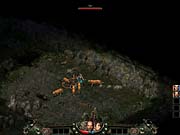
But don't expect Prince of Qin to be dumbed down. Object Software's next project will retain the dedication to Chinese history demonstrated in its earlier efforts. A rough demo build reveals that the game should contain a lot more depth than the average hack-and-slasher. Although the basic elements of gameplay will be familiar to anyone who has slain a monster and picked up a sack of gold coins, these conventions are being spiced up with authentic historical details and a story adapted from events in Chinese antiquity. Add to that a leading man straight out of a heroic saga, a sprinkling of magic, weapons and other items that were commonplace in ancient China, and a substantial multiplayer mode, and you've got a role-playing game that might just stand out from the sword-swinging, elf-ears-wearing crowd.
For more on the development of Prince of Qin, we talked to lead designer Liu Yu Bin:
GameSpot: Can you go over the background story behind Prince of Qin? Like with your previous games, Fate of the Dragon and Dragon Throne: Battle of Red Cliffs, is the story here taken straight from Chinese history? Or is it a bit of a diversion?
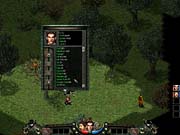
Liu Yu Bin: Actually, it's both. The setting is historically accurate, but the story is ours. In 213 B.C., the first emperor of Qin, on the advice of his prime minister, Li Si, ordered that all the classical books of the six former states other than Qin be burned. In 212 B.C., Confucian scholars who objected began to be buried alive. The crown prince of Qin, Fu Su, the protagonist in the game, was one of the few at the imperial court who had the courage to object to these orders. His opposition infuriated his father, and he was sent to the north to supervise the construction of the Great Wall and defend the border from the Huns. Fu Su was very successful, leading his troops in numerous successful military campaigns, and he was universally popular. But his removal from the center of power carried a heavy price, because when the power play took place on the death of the first emperor, an effort was made to exclude him from the throne. In 210 B.C., Fu Su received a supposed imperial edict, ordering him to commit suicide. In history, Fu Su obeyed this edict and killed himself, but in the game, he lives and launches himself on a mission to find out the truth about the edict (it was a forgery) and to avenge himself against those who had plotted against him.
GS: Judging from the demo build, Prince of Qin is an action RPG. Are comparisons to Diablo warranted? There does seem to be a lot of story development for a game that is ostensibly focused on combat.
LYB: Yes, Prince of Qin is an "A-RPG," so we paid a lot of attention to the design of combat and game plots. Numerous stories on both the main storyline and subsidiary ones are unveiled in the context of multiple fierce fights. And the conversation system enables players to learn about the chaos of the collapse of the Qin Dynasty more realistically by talking with people. Through what Fu Su sees and does, players can experience for themselves what it was like to live through such a turbulent time. Through Fu Su's eyes, players will experience subtle feelings about love, hatred, life, and death.
The Art of Fighting
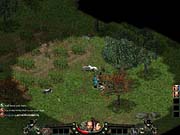
GS: Fu Su is classified as a paladin, but players can recruit other characters into their three-man party from the beginning of the game. Can you tell us about all of the character classes that players will encounter?
LYB: Altogether, there are five main character classes: paladins, muscle men, assassins, wizards, and witches. Each is equipped with 20 skills and the use of magic. In-game objectives are accomplished with different weapons. For example, paladins are good at attacking and defending, as well as making or repairing weapons; muscle men are superior in melee combat and summoning/taming ferocious beasts; assassins excel in laying traps, long-range attacks, stealing, and hiding; and wizards and witches have magic skills. There are also many unique actions and special effects that players can make use of.
GS: Is there going to be an option to create a party of adventurers as well? Is there a character-creation process with classes, stats, and skills, similar to that in typical fantasy role-playing games?
LYB: Prince of Qin has a lot of real-time combat, but it is a bit different from Diablo in that the game allows players to command a group as large as five people. So in Prince of Qin, team spirit is emphasized, and therefore, there is more emphasis on strategy and tactics. Fu Su is the player character, but he will make friends with many other heroes during his adventures. All of them have their own special backgrounds and experiences, and they may join your group. With their love, hatred, or even a heart full of revenge, they will play their parts to make the game develop. Fu Su will appear as a paladin in the game. All the heroes are equipped with various skills and magic. And because Fu Su was a real character in history and all the other characters will join in with the unfolding of the stories, there is no character-creation process in Prince of Qin.
GS: What will the gameworld be like? Can you describe some of the locations that players will visit in Prince of Qin? The setting seems to be vast and heavily populated, judging by the number of nonplayer characters you encounter in the demo build.
LYB: There is a lot for players to see and experience in the game environment. More than 100 independent regions of ancient China can be visited, including cities, villages, famous mountains, caves, an underground palace, and so on. In the game, you can appreciate the splendor of the Great Wall, the tomb of the first emperor of Qin, the Epang Palace, etc. Apart from country scenes such as snowfields, grassland, forest, mountains, rivers, and caves, you will see village and city scenes, which accurately reflect structures and architecture as they existed at the time. Players will encounter more than 200 different NPCs and be challenged by dozens of enemies, all of them designed according to actual historical records.
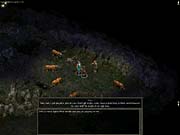
GS: One description of the game refers to Prince of Qin's "sophisticated fighting system rooted in the ancient philosophy of the five elements." What are the five elements, and how does this work exactly?
LYB: Yes, we have the concept of the five elements, and we think it is going to be quite intriguing for players in the west who are probably coming across it for the first time. We have made sure to use it in the game because the first emperor of Qin was a firm believer in the theory of the five elements. In ancient China, philosophers believed that the world was made up of metal, wood, water, fire, and earth. They found that these five elements interacted with one another to enhance or reduce skills and abilities. For example, water restricted fire while wood promoted fire. In the game, the five elements play a major part in gameplay. The weapon and inventory systems, along with the character attributes system, are designed to correspond with this concept. You can enrich the fighting modes and effects by making use of the interactivity between the elements--metal restricts wood but promotes water, wood restricts earth but promotes fire, earth restricts water but promotes metal, water restricts fire but promotes wood, and fire restricts metal but promotes earth.
In the fighting system, you need to make use of the relations amongst the five elements to activate concealed attributes in some equipment. It works as follows: Rings activate weapons in the hands, necklaces activate helmets, and belts activate armor. For example, a necklace of earth can activate the concealed attributes of a helmet of metal. As to the design of the character system, your enemies are also created according to the concept of the five elements. For example, to get the best result when attacking an enemy of metal, you should choose a weapon of fire. When fighting an enemy of earth, you should choose a weapon of wood. And so on.
The Stage of History
GS: Will most of Fu Su's adventures revolve around combat, as in the early quests seen in the demo build? Or will there also be an emphasis on traditional role-playing character building, quests, and puzzle solving?
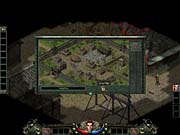
LYB: Yes, players will be challenged by numerous interesting battles in the game. In addition, there are many puzzles to be solved and many quests that can be completed in various ways. For example, to make somebody obey you, you can bully him to make him submit, you can persuade him with reason, or you can just resort to brute force. The story varies depending on how you solve the puzzles and quests, and this may even have an effect on the final ending of the game.
GS: How important will the story be to the player?
LYB: The story is very important to players. In Prince of Qin, the conversation system plays a more significant role than in conventional RPGs. Actually, the whole plot of the game is revealed through frequent conversations. We encourage communication. Most of the time, there are several answers to one question. Different conversations will lead to very different outcomes. So players should be careful in making choices and try to benefit as much as possible from these interesting conversations.
GS: Also, does the game handle your items and inventory system in the same fashion as traditional RPGs? It's interesting that equipment in the game has been modeled on authentic hardware from Chinese history, right down to a detailed description of how each item was used in antiquity.
LYB: Yes, the construction and operation of the weapon and inventory system are similar to those of traditional RPGs. Every weapon and inventory item in Prince of Qin has been designed with reference to historical records. We have tried to make the game an exposition of weapons and equipment from ancient China, as they were very different from those in the ancient western world. The brief introduction of every item allows players to learn more about the weaponry and equipment used in ancient China.
GS: What will the multiplayer modes be like? Are you looking to re-create what Blizzard did with Diablo?
LYB: The multiplayer mode is very powerful and can be enjoyed in two ways. One is that players can establish an official game server, which allows stable multiplayer games on the Net. In this way, 200 to 500 people can play Prince of Qin at the same time online. The other one allows players to establish their own game server, and then 10 to 20 people can play the game together. So the game has a stronger multiplayer element than Diablo.
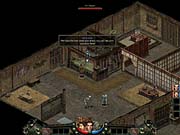
GS: Are you doing anything special with the graphics and sound to re-create ancient China? Any nice little visual and audio touches that you could tell us about? The demo build features a haunting score.
LYB: We have tried to re-create many heroes and events during that period as realistically as possible. By the way, to ensure as much historical accuracy as possible, all of our designers and artists travelled to Xi'an, where the tomb of the first emperor of Qin is located, to learn and collect materials. All of the scenes, buildings, and items are being designed to accurately reflect the reality at that time. Moreover, we have adopted full-screen dynamic light-shade techniques and effectively simulated different climate phenomena such as rain, snow, wind, thunder, and lightning, as well as the alternation of day and night. Players may even be impressed by some of our subtle details, such as a burning tree trunk, the rising smoke and steam above a pot, a trickling brook, etc. Our music is in ancient style and is performed mostly with ancient Chinese instruments. We feel the score is very special, and we are very proud of it.
GS: Any projections on when you'll finish development so that we can all give Prince of Qin a try?
LYB: A preview version for the media has just been sent to Strategy First. The full game is scheduled to be released in mid-August.
GS: Thanks for your time.
Got a news tip or want to contact us directly? Email news@gamespot.com
Join the conversation